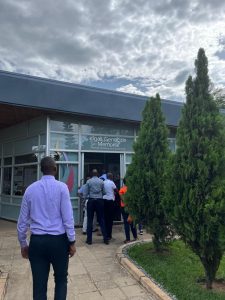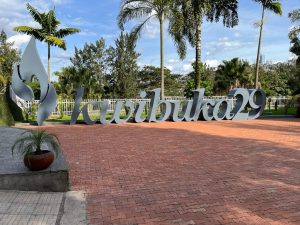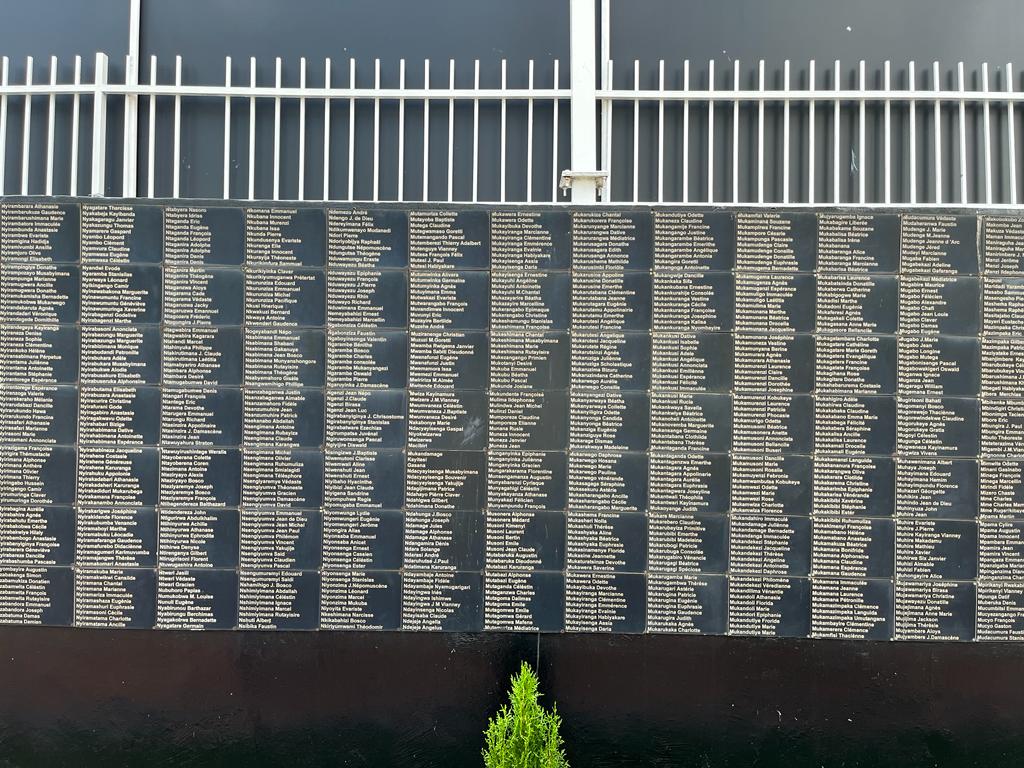Rwanda is known as the land of a thousand hills. One visit here and you will understand why. Rolling verdant hills literally dot the landscape. Kigali is Rwanda’s capital and geographic center. For natural beauty, Rwanda is unmatched. In addition to the natural wonders of the land, the Rwandan government has done an incredible job of transforming Rwanda, and particularly Kigali, into an ultramodern city.
One striking thing visitors notice is that there is no trash anywhere in public site, quite a change from many other African cities. Moreover, the streets are lined with perfectly manicured lawns, various kinds of tropical flowers, and palm trees, a true arborists delight. Along with its temperate climate, warm people, and plethora of animal safaris, Rwanda is quickly becoming one of the top tourist destinations in the world.

However, the land of a thousand hills is also the land of thousands of scars. Beneath the veneer of Rwanda’s natural beauty and the success of its modern development lies an unimaginably ugly history. Rwanda is comprised of three people groups: the majority Hutu, and minority Tutsi and Twa. Since the Belgians colonized Rwanda in the nineteenth century, ethnic animus has existed between the Hutus and Tutsis, resulting in sporadic acts of genocide against the Tutsis.
A century of boiling hatred and persecution exacerbated by an extremist Hutu power movement and aided by the state media resulted in one of the twentieth century’s greatest tragedies.
On April 6, 1994, the moderate Hutu President Juvenal Habyarimana was assassinated. Within hours, the Hutu extremists, many of which were high ranking military officers, had taken over the government and began to implement a systematic plan to exterminate every Tutsi in Rwanda. For years the Interhamwe, a radicalized Hutu youth movement, had been preparing and training for genocide. In fact, just before the president’s assassination, a Hutu general had sent a communication that the Interhamwe had refined their training to the point they were able to kill one thousand people in twenty minutes with crude weapons such as machetes and blunt objects.
For the next one hundred days the world sat by while Rwanda was baptized in the blood of Tutsis and moderate Hutus. Men, women, and children were murdered by lifelong neighbors and friends. There would be no mercy. No escape. Thousands of Tutsi women were repeatedly raped by soldiers with HIV and subjected to the cruelest tortures. Children were forced to hack their families to death.
The town of Nyange was the site of one of the many horrifying episodes of the genocide. Father Seromba, the local parish priest herded the terrified members of his church and community into his church promising protection. When over 3,000 people had filled the church, Seromba locked the doors and called for bulldozers to destroy the church. Seromba murdered 3,000 of his own flock.
By the time the Rwandan Patriotic Front had liberated Kigali in early July, over one million people had been murdered. Over 300,000 children were left as orphans, and 85,000 children became heads of households. Thousands of women that had been raped were left to die excruciating deaths from AIDS.
Perhaps the most distressing part of the genocide is that on April 6, 1994, ninety percent of Rwandans identified as Christians. In fact, Rwanda was the most Christian nation in Africa. Yet,
how can a supposed Christian nation dissolve into such barbarism on the level displayed in the Rwandan genocide? One might ask a similar question about Germany, which was the most Christian country in Europe at the outbreak of World War II. The culprit is nominal Christianity, a Christianity that is in name only.
I abhor nominal Christianity. It is a bane upon the world and a stain upon the church. Nominal Christianity is a plague that believes in nothing, stands for nothing, and is willing to die for nothing. It cannot withstand the onslaught of devilish ideologies and hellish hatred and inevitably becomes complicit in evil rather than a bulwark of righteousness.
Our great passion at ITEM is to be a catalyst for transformation in the lives of pastors, churches, and communities. We have no interest in merely filling heads with theological knowledge shorn from any impact in the real world. We are obsessively devoted to transformation.
Today, the political, economic, and cultural recrudescence of Rwanda is remarkable and a testament to the steely determination and resilience of this amazing people. But most of all to the grace of God who turns tragedy into triumph. This month marks twenty-nine-years since the horror of the genocide, an occasion promoted by the government as Kwibuka 29 or “remember.” We remember and we mourn, but not as those without hope. For one day the King will come and set everything right. His reign will be an everlasting one characterized by peace and justice where machetes will be beaten into plowshares and spears into pruning hooks.

Until that time, let us tirelessly labor to reach and teach the nations.
Maranatha!
